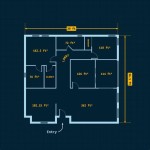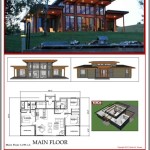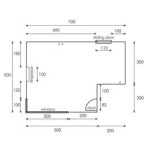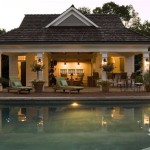House Plans For 2 Family Homes: Design Considerations and Practical Applications
Two-family homes, also known as duplexes, present a unique opportunity for homeowners seeking to combine living space with income potential or to accommodate multiple generations within a single property. Selecting the right house plan is crucial for maximizing the benefits of this type of dwelling. These plans require careful consideration of various factors, including lot size, zoning regulations, privacy concerns, and accessibility requirements. Understanding the different types of two-family home designs, their features, and the specific needs of the occupants is essential for a successful project.
The appeal of two-family homes stems from their versatility. They can serve as a primary residence where the owner occupies one unit and rents out the other, generating passive income to offset mortgage payments and other housing costs. Alternatively, they can provide a solution for families who wish to live in close proximity without sacrificing independence, allowing elderly parents, adult children, or other relatives to reside in their own separate living spaces. Furthermore, two-family homes offer a potential investment opportunity, as both units can be rented out to maximize rental income.
However, designing a two-family home requires careful planning to ensure the comfort, privacy, and functionality of both units. Aspects such as soundproofing, separate entrances, individual utility meters, and adequate parking must be thoughtfully addressed. The overall design should also blend cohesively with the surrounding neighborhood aesthetic while fulfilling the practical requirements of the occupants.
Key Considerations in Two-Family Home Design
Designing a two-family home involves a multifaceted approach, demanding attention to detail in numerous areas. The success of the design hinges on addressing key factors related to space allocation, privacy, and functionality.
Zoning and Building Codes: Before embarking on a two-family home project, it is imperative to thoroughly research and understand the local zoning regulations and building codes. These regulations dictate permissible land uses, setback requirements, building height limitations, and other constraints that can significantly impact the design of the home. Some jurisdictions may have specific regulations concerning the density of two-family homes within a given area, impacting the feasibility of the project. Compliance with these regulations is essential for obtaining the necessary permits and avoiding costly revisions during the construction process.
Lot Size and Configuration: The size and shape of the lot significantly influence the type of two-family home that can be constructed. A narrow lot may necessitate a vertical design with units stacked on top of each other, while a wider lot may accommodate a side-by-side layout. The configuration of the lot also impacts the placement of driveways, parking areas, and outdoor spaces. Careful consideration should be given to maximizing the usable space on the lot while adhering to setback requirements and maintaining adequate separation between the two units.
Privacy and Sound Insulation: Maintaining privacy between the two units is paramount for ensuring the comfort and well-being of the occupants. This involves careful consideration of the placement of windows and doors to minimize direct sightlines, as well as the implementation of effective sound insulation measures. Walls and floors should be constructed with sound-dampening materials to reduce the transmission of noise between units. Shared areas, such as hallways or stairwells, should be designed to minimize disruption to either unit.
Types of Two-Family Home Designs
Various types of two-family home designs cater to different lot sizes, zoning regulations, and occupancy needs. Understanding the characteristics of each type is crucial for selecting the most appropriate design for a particular project.
Side-by-Side Duplex: This design features two units situated adjacent to each other, sharing a common wall. Each unit typically has its own separate entrance, driveway, and outdoor space. This layout is often preferred for its sense of separation and privacy, as it allows each unit to function almost like a detached single-family home. The side-by-side duplex is well-suited for wider lots and can be easily adapted to accommodate different architectural styles.
Up-and-Down Duplex: In this design, one unit is located on the ground floor, and the other is situated above it. This layout is generally more space-efficient than the side-by-side duplex, making it suitable for smaller lots. Each unit has its own separate entrance, typically located on opposite sides of the building or at the front and rear. Sound insulation is particularly important in this design to minimize noise transmission between the units. Up-and-down duplexes can be designed with features such as balconies or decks to provide outdoor living space for the upper unit.
Front-and-Back Duplex: This design features one unit located at the front of the property and the other at the rear. Each unit has its own entrance, often accessed from separate streets or driveways. This layout can provide a high degree of privacy, as the units are physically separated from each other. Front-and-back duplexes are well-suited for long, narrow lots and can be designed to maximize natural light and ventilation for both units.
Accessory Dwelling Unit (ADU): In some jurisdictions, an ADU, also known as a granny flat or in-law suite, is considered a type of two-family home. An ADU is a separate living unit located on the same property as a primary residence. It can be attached to the main house, such as a basement apartment or above-garage unit, or it can be a detached structure. ADUs are often used to house family members or to generate rental income. Local regulations regarding ADUs vary widely, so it is essential to check with the local zoning department before proceeding with this type of project.
Design Features and Considerations for Occupants
Beyond the basic layout, numerous design features can enhance the functionality, comfort, and appeal of a two-family home for both occupants.
Separate Entrances and Utilities: Providing separate entrances for each unit is crucial for maintaining privacy and independence. Each unit should have its own front door and, ideally, its own driveway or parking space. Individual utility meters for water, gas, and electricity allow each occupant to control their own consumption and avoid disputes over utility bills. Separate heating and cooling systems also contribute to individual comfort and control.
Shared Amenities and Outdoor Spaces: The design should carefully consider the allocation of shared amenities and outdoor spaces. If a shared laundry room is provided, it should be conveniently located and easily accessible to both units. Outdoor spaces, such as gardens, patios, or decks, can be designed to provide both separate and shared areas. A well-designed landscape can enhance the curb appeal of the property and create a pleasant environment for all occupants.
Accessibility and Universal Design: When designing a two-family home, it's important to consider the needs of occupants with disabilities or mobility limitations. Incorporating accessibility features, such as ramps, wider doorways, grab bars, and accessible bathrooms, can make the home more comfortable and usable for everyone. Universal design principles, which focus on creating spaces that are adaptable and usable by people of all ages and abilities, can be applied throughout the design to enhance its overall functionality.
Floor Plan Layout and Room Sizes: The floor plan layout of each unit should be carefully considered to maximize space utilization and functionality. Open-concept living areas can create a sense of spaciousness, while strategically placed hallways and doorways can enhance privacy. Room sizes should be adequate for the intended use, with consideration given to furniture placement and circulation space. Adequate storage space is essential for both units, and walk-in closets, pantries, and storage sheds can be incorporated into the design.
Energy Efficiency and Sustainability: Incorporating energy-efficient features into the design can reduce utility costs and minimize the environmental impact of the home. This can include features such as energy-efficient windows and doors, insulation, high-efficiency HVAC systems, and solar panels. Sustainable building materials, such as recycled content products and sustainably harvested wood, can also be used to create a more environmentally friendly home.
Aesthetic Considerations and Curb Appeal: The exterior design of the two-family home should be aesthetically pleasing and blend cohesively with the surrounding neighborhood. The architectural style should be appropriate for the local context, and the materials used should be durable and low-maintenance. Landscaping can play a significant role in enhancing the curb appeal of the property and creating a welcoming environment for occupants and visitors. Attention should be given to details such as the placement of windows, the design of the roofline, and the use of exterior lighting.

Plan 45370 Colonial Style Duplex Home Design Two Story 3 Be

Duplex House Plans Modern 2 Family Home 269 8 M2 2778 Sq Feet Townhouse
Dream 2 Family House Plans Designs

Top 10 Duplex Plans That Look Like Single Family Homes Houseplans Blog Com

Multi Family Plan 4285

Plan 21603dr 6 Unit Modern Multi Family Home With 900 Sq Ft Units

Duplex Best Ing House Plans 2 Family Plan

Plan 42571db Country Farmhouse 2 Family House With Shared Front Porch 1291 Sq Ft Units Bed

Plan 73483 Ranch Style With 5 Bed 3 Bath 6 Car Garage

Multi Family House Plans Floor The Designers
Related Posts








